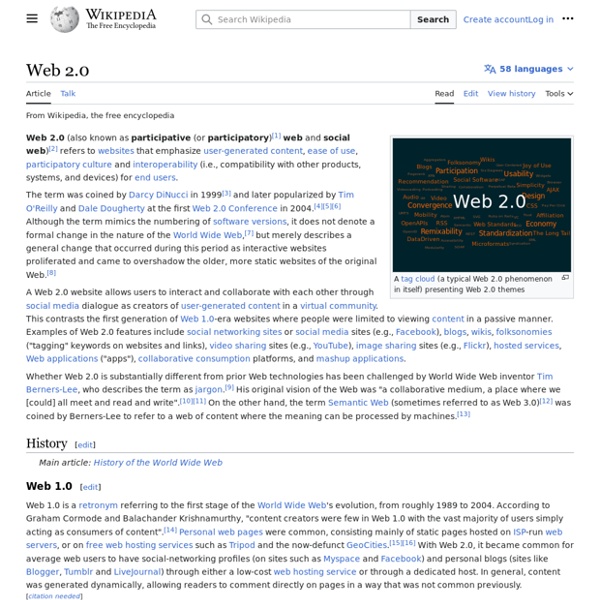14 Powerful Tips for Marketing on Facebook
Posted on August 10, 2010 Filed Under Facebook, Internet Marketing, Social Media Marketing, Social Networking, Traffic Building, Uncategorized Finding a good place to showcase your products, services and websites for free in the online world is a dream for everyone – Facebook has made this a reality. With half a billion Facebook users and thousands of online communities to choose from, Facebook has brought potential customers much closer to you. It’s no big secret that Facebook can help you in online marketing.
NGAkids
SEA-SAWS SEA-SAWS is fun for kids of all ages. Select photographs of natural and man-made objects, then arrange the pieces to create a seascape or an abstract composition. The BUILD tool helps you construct animated characters and set them in motion. (Shockwave, 7.5 MB) FACES & PLACES helps children of all ages create portraits and landscape paintings in the style of American naive artists. By combining visual elements borrowed from more than 100 works in the National Gallery's permanent collection, this two-part interactive activity offers an overview of American folk art of the 18th and 19th centuries.
Semantic Web
W3C's Semantic Web logo The Semantic Web is a collaborative movement led by international standards body the World Wide Web Consortium (W3C).[1] The standard promotes common data formats on the World Wide Web. By encouraging the inclusion of semantic content in web pages, the Semantic Web aims at converting the current web, dominated by unstructured and semi-structured documents into a "web of data". The Semantic Web stack builds on the W3C's Resource Description Framework (RDF).[2] According to the W3C, "The Semantic Web provides a common framework that allows data to be shared and reused across application, enterprise, and community boundaries.
My Best of series
You can find all of my “Best” lists in broad categories here. The link to that page can also be found at the top right of my blog: My Best Of Series I also have them all on another page where they are listed in the chronological order in which I originally posted them. You can find that link at the top of my blog by first clicking on About and then scrolling down to Websites of the Year. Two thousand “Best” lists are a lot of best lists!
Social media
Diagram depicting the many different types of social media There are many effects that stem from internet usage. According to Nielsen, internet users continue to spend more time with social media sites than any other type of site. At the same time, the total time spent on social media in the U.S. across PC and mobile devices increased by 99 percent to 121 billion minutes in July 2012 compared to 66 billion minutes in July 2011.[5] For content contributors, the benefits of participating in social media have gone beyond simply social sharing to building reputation and bringing in career opportunities and monetary income, as discussed in Tang, Gu, and Whinston (2012).[6] Classification of social media[edit]
4 Ways Social Media is Changing Business
Soren Gordhamer writes and consults on ways we can more creatively and effectively use the technologies of our age, including social media. He is the author of "Wisdom 2.0" (HarperOne, 2009). You can follow him on Twitter at @SorenG. Social media is helping to forge a new era in business transparency and engagement, creating both new challenges and opportunities.
Running on Empty
Computer science and the technologies it enables now lie at the heart of our economy, our daily lives, and scientific enterprise. As the digital age has transformed the world and workforce, U.S. K–12 education has fallen woefully behind in preparing students with the fundamental computer science knowledge and skills they need for future success. To be a well-educated citizen as we move toward an ever-more computing-intensive world and to be prepared for the jobs of the 21st Century, students must have a deeper understanding of the fundamentals of computer science. The report finds that roughly two-thirds of the country have few computer science education standards for secondary school education, and most states treat high school computer science courses as simply an elective and not part of a student’s core education.
E-Learning 3D, Soyez 3D WEB - Parcours pédagogiques en 3D
MyBloggerLab Suivez-nous sur twitter Devenez Fan sur Facebook Rejoignez notre profil Google+
10 Internet Technologies Educators Should Be Informed About – 2011 Update
These Technologies Are Changing Education. Are You Familiar With Them? It’s been nearly two and half years since the publication of the first “10 internet technologies that educators should be informed about” article on this site and given the fast paced evolution of technology it’s time for an update. The start of new school year is the perfect time to refresh this list!



